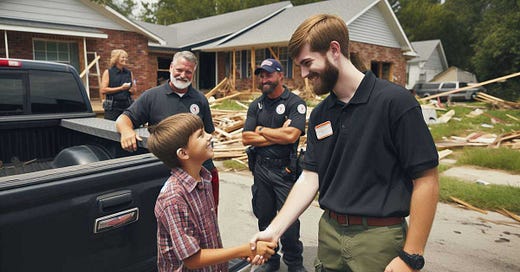Southern Baptist associations: A foundational network of cooperation and local church support
The Southern Baptist Convention (SBC) stands as one of the largest Christian denominations in the United States. Its conservative theological stance and unwavering commitment to the evangelical mission have shaped American Christianity and culture for more than a century. But beyond the individual churches and national conventions, a foundational network binds Southern Baptists together: the local Baptist association.
Baptist associations have a rich history dating back more than 400 years. They represent the oldest form of cooperation within Baptist life in the United States and pre-date the SBC's founding. Baptist associations are not merely administrative entities; they serve as the lifeblood of local church collaboration.
Origins and Purpose: The first Baptist association was formed in 1707. Since then, associations have been the primary place where Southern Baptist churches come together to cooperate. Associations serve as a bridge between individual congregations and larger denominational structures. They facilitate communication, fellowship, and joint efforts.
Local Cooperation: Southern Baptist associations are composed of like-minded local churches that voluntarily join forces. They provide a platform for churches to share resources, exchange ideas, and collaborate on missions and ministry. Associations organize and facilitate events such as revivals, training sessions, and community outreach programs.
Unity in Diversity: Southern Baptist churches are as diverse as their communities. Each church has its unique character, worship style, and ministry focus. Associations celebrate this diversity while emphasizing commonalities. Regardless of race, ethnicity, size, or location, Southern Baptists find unity in their shared faith and mission.
Autonomy and Cooperation: Southern Baptist churches cherish their autonomy. Each congregation governs itself independently. However, they recognize the power of voluntary cooperation. Associations allow churches to pool resources for greater impact. The Baptist Faith and Message (BF&M) serves as a confessional consensus of the denomination, outlining core beliefs without imposing rigid creeds.
Why do Southern Baptist associations still matter today?
Local Impact: Associations operate at the grassroots level. They understand the unique needs of their communities. Through associations, churches collaborate on local evangelism, disaster relief, and community service. Associations address practical challenges faced by local churches, such as pastoral transitions and leadership development.
Church Revitalization: In an era of declining church attendance and cultural shifts, associations play a crucial role in church revitalization. They connect struggling churches with resources, training, and encouragement. Associations foster a sense of belonging and accountability, helping churches navigate change.
Missionary Endeavors: Associations are hubs for missions and outreach. They coordinate efforts to reach the lost both locally and globally. Mission trips, church planting, and disaster response initiatives often begin at the association level. By working together, churches extend their impact beyond their walls.
Historical Continuity: Associations link the present to the past. Their existence reminds Southern Baptists of their heritage and shared commitment. As the building blocks for state conventions and the SBC, associations preserve continuity and tradition.
Southern Baptist associations remain relevant because they embody the spirit of cooperation, adapt to changing contexts, and empower churches to fulfill their mission. They are not relics of the past but vibrant networks that continue to shape the future of Southern Baptist life.
Sources:




